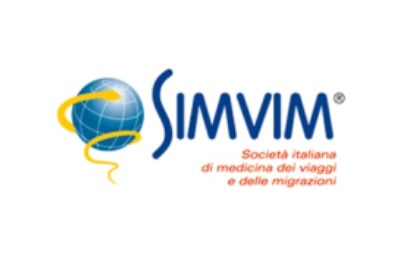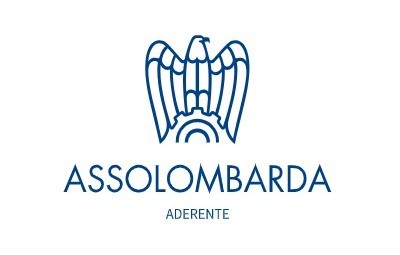Chickenpox
Chickenpox is an infectious disease of viral origin, caused by the varicella zoster virus, of the herpes virus family. It is a highly contagious disease that is transmitted from an infected person to a healthy person via the respiratory route, either through droplets of saliva and nasal secretions that are spread while talking, sneezing or coughing, or direct contact with the varicella lesion.
Most adults worldwide are infected with the human neurotropic alphaherpesvirus, the varicella-zoster virus. The latter is the etiological agent of two different diseases:
- A generalized vesicular rash called varicella, or chickenpox;
- A localized rash called herpes zoster (HZ), also commonly known as shingles. Humans are the only species affected by the virus and no human reservoirs are known.
Although chickenpox and HZ were known to be related, it was not until 1965 that British general practitioner Dr. Robert E. Hope-Simpson suggested that "Shingles is a spontaneous manifestation of varicella infection”.
CAUSES
The virus belongs to the Herpesviridae family, in the varicella-zoster virus genus. Its appearance is similar to that of other herpes viruses in the same family.
The virus consists of a double-stranded DNA genome that contains at least 70 genes, including those that induce humoral and cellular immunity in the host, and-is the smallest genome in the herpes virus family.
The particles, which measure approx. 150-200 nm in diameter, and range from spherical to pleomorphic in shape, are composed of three protein layers: a nucleocapsid containing the double-stranded viral DNA (dsDNA); a tegument layer, consisting of numerous proteins of both viral and host origin that surround the nucleocapsid, and an envelope consisting of a host-derived, double-lipid layer, inserted into outward-facing viral glycoproteins.
When a VZV virion enters the host cell, integument proteins are released into the newly infected cell, which alter the host environment. This inhibits the antiviral responses and influences the fate of the viral programme, i.e., lytic or latent infection.
Symptomatic reactivation of the virus, which can lead to the development of Herpes Zoster or associated diseases, typically occurs only once or twice in the lifetime of an infected individual, and likely requires two key events: the stimulation of a latent infected neuron and the bypass of existing immuno-protective mechanisms. In contrast, asymptomatic reactivation is believed to occur more frequently.
However, the environmental factors and molecular mechanisms underlying virus reactivation in humans are still not sufficiently understood.
TRANSMISSION
Chickenpox is a viral infectious disease that is less contagious than measles and whooping cough, but more contagious than rubella and mumps.
The incubation period varies from 14 to 16 days, with a minimum of 10 and a maximum of 21 days between the time of infection and the first appearance of the rash.
Infection occurs when the virus comes into contact with the upper airways of a susceptible individual. The early stages of infection are characterised by multiplication of the virus in the pharyngeal nose and conjunctiva over the following 2 to 3 days. From here, the virus rapidly reaches the regional lymph nodes where it continues to multiply. It is from these sites that the primary viraemia successively spreads to cells of the reticuloendothelial system.
Individuals who are already immune to the virus are able to limit its multiplication and easily overcome the local infection.
GEOGRAPHICAL DISTRIBUTION
VZV-related diseases still occur worldwide. In some developing countries, VZV infection is less of a concern, compared to other more serious infectious diseases, but the growing number of immunocompromised individuals worldwide requires the establishment of worldwide herd immunity against VZV.
Even in developed countries, where routine varicella vaccination is carried out, VZV infection has been far from eradicated, which is the common and ultimate goal of infectious disease research. To achieve these goals, several distinct research strategies have been actively pursued in the field of VZV research.
SYMPTOMS
The incubation period varies from 14 to 16 days, with a minimum of 10 and a maximum of 21 days, between the time of exposure and the appearance of the rash.
Chickenpox is characterised by a blistering, itchy rash that progressively spreads all over the body, usually with relatively mild symptoms. Prodromal symptoms, which are particularly present in older children, include fever, malaise, anorexia, headache, and sometimes abdominal pain.
The lesions initially appear on the scalp and spread to the face, trunk, and limbs: the exanthem stage starts with the appearance of small, itchy, erythematous macules, which evolve within a few hours into vesicles filled with clear fluid, on an erythematous base. The vesicles are very superficial and fragile, so they can break open easily.
During primary infection, VZV gains access and establishes permanent latency in ganglia along the entire axis of the central nervous system. Months or years later, when VZV-specific cellular immunity (but not humoral immunity) wanes, VZV can reactivate to cause shingles, which is characterised by a painful rash.
DIAGNOSIS
In most cases, diagnosis of chickenpox is extremely easy. The most typical aspects of the rash are:
- appearance of a papulovesicular rash, accompanied by low grade fever and generally mild symptoms;
- the macules rapidly progress to papules, which turn into vesicles and then into scabs;
- The skin eruptions tend to appear in crops that spread across the body and are predominantly present on the scalp, face, and trunk;
- The various areas of the skin can show different stages of infection at the same time.
TREATMENT
Chickenpox typically heals without leaving a scar.
The prognosis may be severe in certain conditions, which is usually due to the host than the virulence of the causative agent. Usually, chickenpox is a self-limiting disease, but it can sometimes cause serious complications, including bacterial sepsis, pneumonia, hepatitis, encephalitis, and haemorrhage, and can occasionally result in death. Serious complications and deaths are most likely to occur in new-born babies, adults, and severely immunocompromised individuals.
PREVENTION
Varicella patients are advised to isolate at home for at least 5 days from the first sign of the vesicles, and contact with other people, especially susceptible individuals, such as pregnant women and new-born babies, should be avoided.
In any case, the best tool to prevent the spread of the disease is vaccination. A single dose of varicella vaccine is 80-85% effective in preventing disease of any severity, and more than 95% effective in preventing severe varicella. The vaccination programme reduced the incidence of the disease by 57-90%, hospitalisations by 75-88%, deaths by 74%, and direct hospital and outpatient medical costs by 74%.
Despite a dramatic decline in varicella with the single-dose vaccine, high rates of varicella outbreaks continue to be reported among the school-age population. Consequently, in 2006, a two-dose varicella vaccination program was recommended by the Centers for Disease Control and Prevention (CDC).
The U.S. two-dose vaccination program has reduced the likelihood of developing chickenpox by 95% and appears to have significantly reduced the number, size, and duration of the outbreaks.
However, many countries have not yet incorporated the two-dose vaccination schedule into their routine vaccination strategy.
Bibliography
K. S. Büchele; D. Ferreira Correa, M. Tuyama, A. dos Santos de Lemos, M. Dias da Costa, E. Cicilini Mesquita, D. Marinho da Costa, J. Cerbino-Neto, M. Catoia Varela, P. Emmanuel Americano Alvarenga do Brasil, L. Gomes Pedro Brandão. Seroprevalence of varicella antibodies in adults without clinical history of disease. doi: 10.1590/0102-311X00149119.
T. Sadaoka, Y. Mori. Vaccine Development for Varicella-Zoster Virus. Springer Nature Singapore Pte Ltd. 2018 123 Y. Kawaguchi et al., Human Herpesviruses, Advances in Experimental Medicine and Biology 1045.
D. P. Depledge, T. Sadaoka, Werner J. D. Ouwendijk. Molecular Aspects of Varicella-Zoster Virus Latency. Viruses 2018, 10, 349; doi:10.3390/v10070349
Bartolozzi G. Vaccini e Vaccinazioni, Seconda Edizione. Masson 2005





